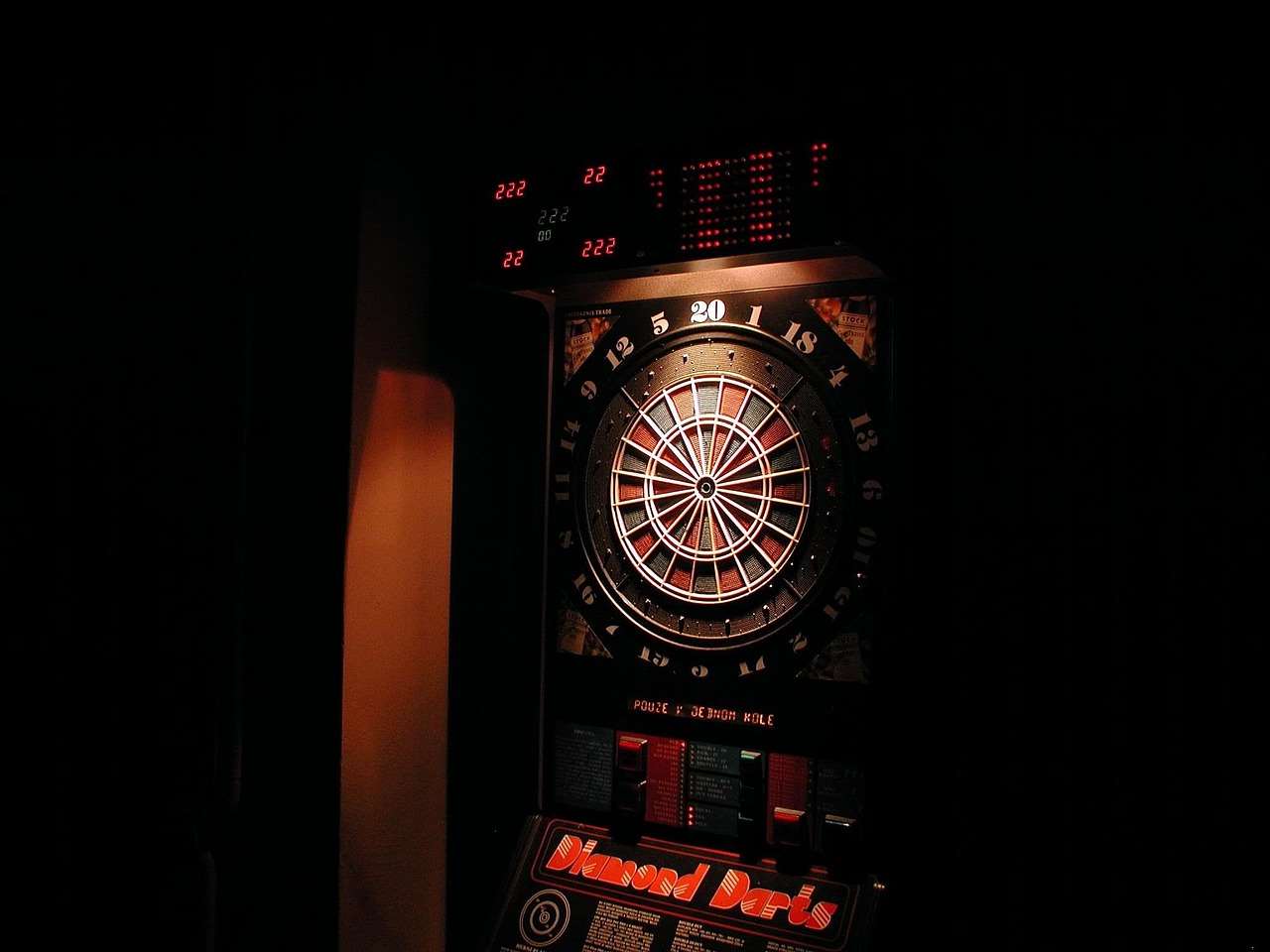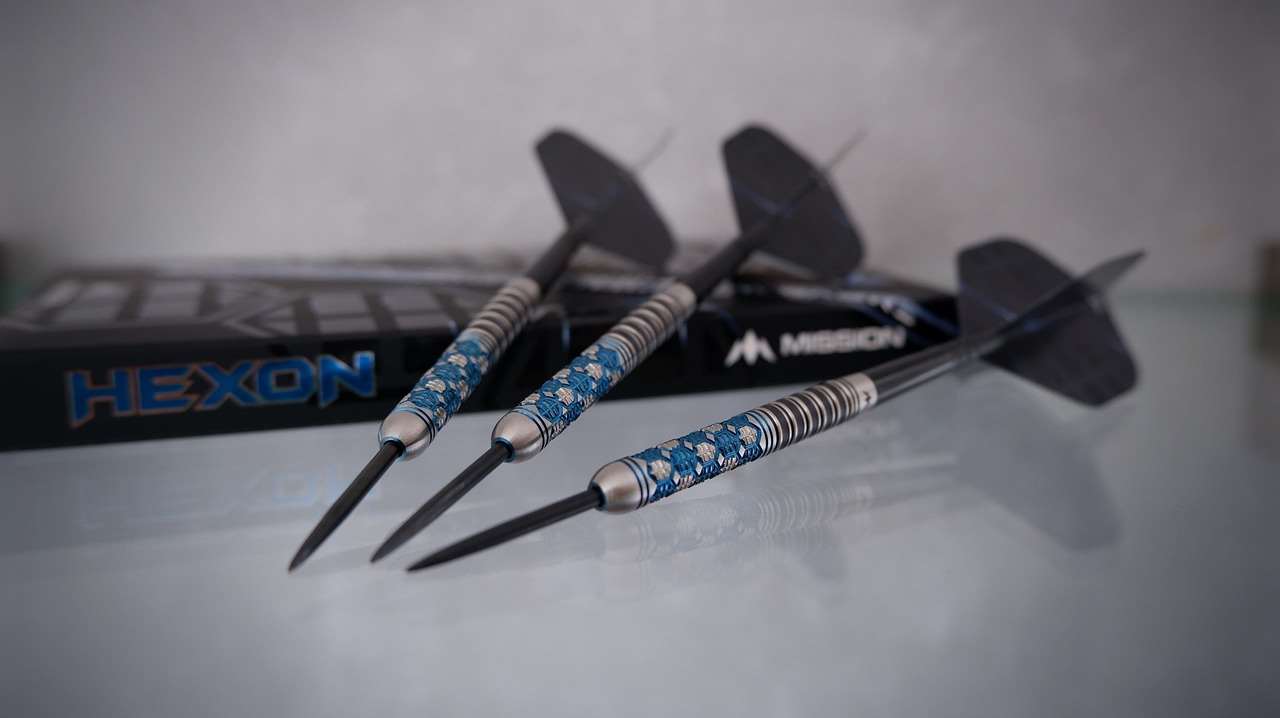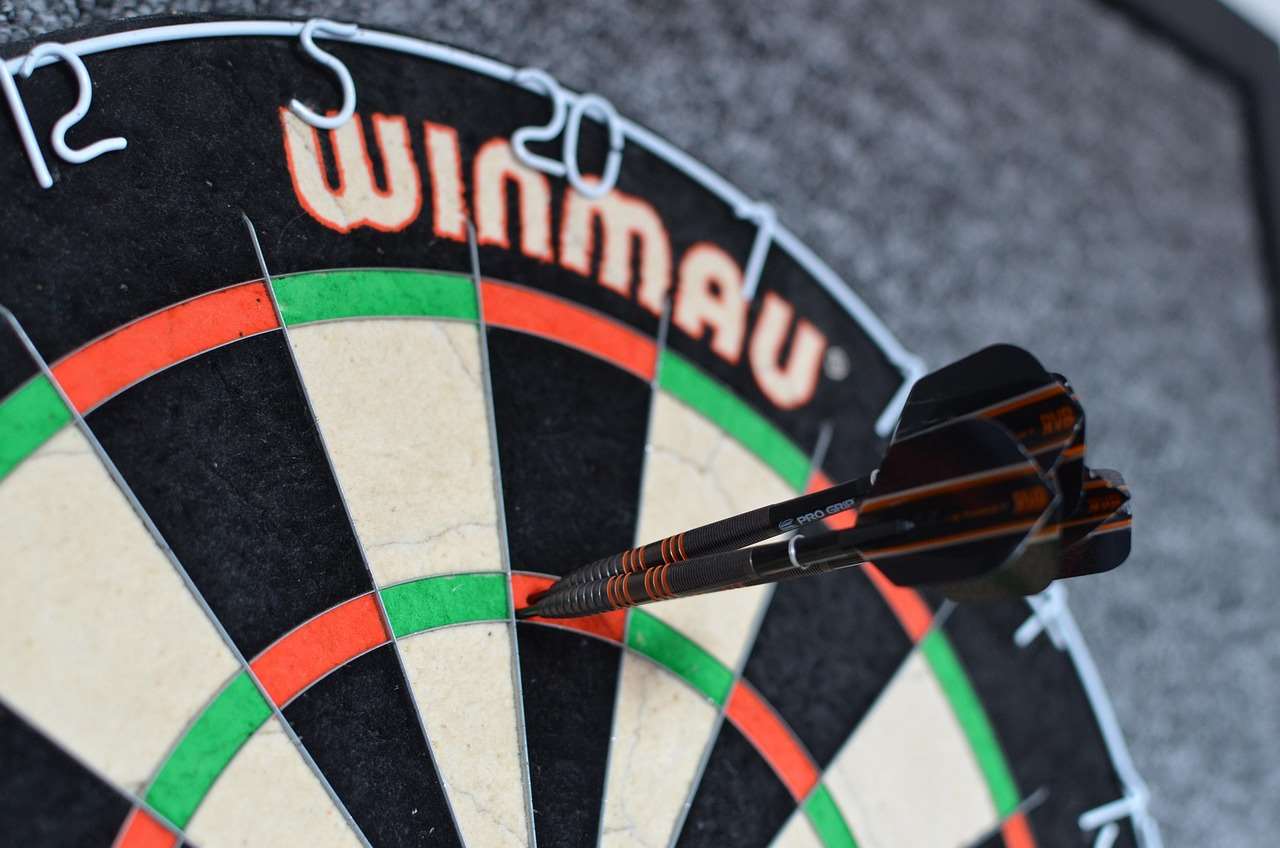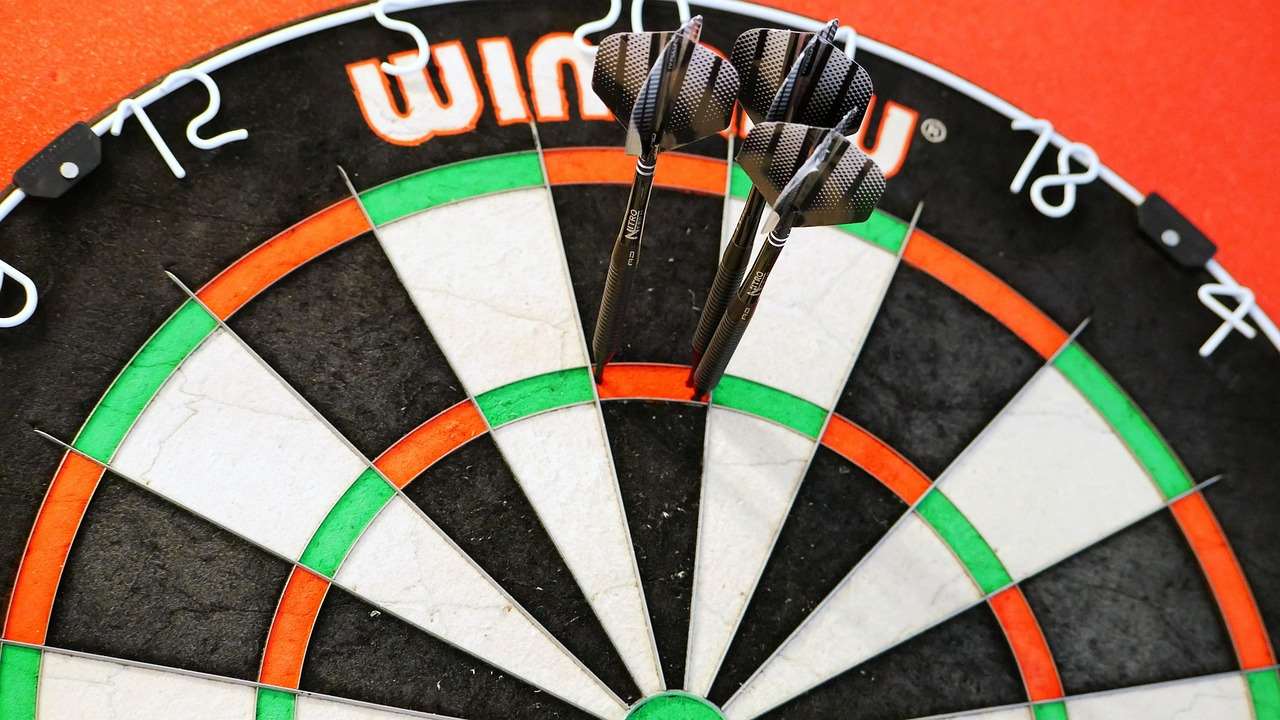Accurately measuring the inner bull diameter is crucial for ensuring fair play and consistent scoring in darts, especially in competitive settings. This article provides a comprehensive guide to inner bull diameter measurement, covering everything from the official specifications to practical techniques and the importance of precision.
⚠️ Still Using Pen & Paper (or a Chalkboard)?! ⚠️
Step into the future! The Dart Counter App handles all the scoring, suggests checkouts, and tracks your stats automatically. It's easier than you think!
Try the Smart Dart Counter App FREE!Ready for an upgrade? Click above!
Understanding the Official Inner Bull Diameter Measurement
The world of darts is governed by specific rules and regulations, and one of the most important aspects is the dimensions of the dartboard itself. A key component of this is the inner bull diameter measurement, also known as the double bull or bullseye. Understanding the official specifications is crucial for ensuring fair play and accurate scoring.
According to the World Darts Federation (WDF) and the Professional Darts Corporation (PDC), the official inner bull diameter is 12.7mm (0.5 inches). This precise inner bull diameter measurement is critical for ensuring consistency across all professional dartboards. Any deviation from this standard can impact gameplay and potentially lead to disputes, which is why it’s important to understand Basic Darts Fundamentals for Beginners.
Here’s a breakdown of the key dimensions related to the bullseye:
- Outer Bull Diameter: This refers to the diameter of the entire bullseye, which is larger than the inner bull diameter. Typically, it’s around 31.8mm (1.25 inches).
- Inner Bull Diameter: As mentioned, this is fixed at 12.7mm (0.5 inches).
- Segment Width: The wires surrounding the bullseye also have a specified width, contributing to the overall target area.

Why Accurate Inner Bull Diameter Measurement Matters
The importance of accurate inner bull diameter measurement extends far beyond professional play. Even in casual games, adhering to the official specifications enhances the overall experience and prevents potential disagreements. Here are some key reasons why precision is vital:
- Fairness: A consistently sized bullseye ensures that all players have an equal chance of scoring points. Deviations can unfairly favor some players over others.
- Skill Development: Accurate dimensions are crucial for developing dart-throwing skills. Practicing on a board with incorrect measurements can hinder progress and lead to inconsistencies.
- Standardization: Using dartboards that meet official standards allows players to seamlessly transition between different playing environments, whether it’s a local pub or a professional tournament.
- Avoiding Disputes: Clear, accurate measurements minimize the risk of arguments and disagreements, ensuring a more enjoyable experience for everyone involved. Consider adapting darts rules for beginners to ensure the game is enjoyable for all.
The Impact of Incorrect Measurements
Imagine playing on a dartboard where the inner bull diameter is slightly smaller or larger than the official 12.7mm. The consequences can be significant:
- Reduced Accuracy: A smaller bullseye makes it harder to hit, frustrating players and potentially discouraging them from continuing to play.
- Increased Frustration: A larger bullseye may make the game too easy, diminishing the challenge and reducing the sense of accomplishment when hitting the target.
- Inconsistent Scoring: Even slight variations in size can affect the overall scoring patterns, leading to misleading results and hindering performance tracking.
Therefore, taking the time to verify the inner bull diameter measurement is a worthwhile investment for any dart player or establishment that offers dartboards.
Tools and Techniques for Measuring the Inner Bull Diameter
Measuring the inner bull diameter measurement is a straightforward process that requires only a few basic tools. Here’s a step-by-step guide:
- Gather Your Tools: You’ll need a reliable measuring tool, such as a digital caliper or a precision ruler. A magnifying glass can also be helpful for ensuring accurate readings.
- Prepare the Dartboard: Ensure the dartboard is securely mounted on the wall and is free from any obstructions.
- Locate the Bullseye: Identify the inner bull diameter, the smaller circle within the larger bullseye area.
- Measure the Diameter: Carefully position your measuring tool across the inner bull diameter, ensuring it spans the entire width. Take multiple readings from different angles to ensure accuracy.
- Record the Measurement: Note down the measurement in millimeters (mm) or inches, depending on your preference.
- Verify Against Specifications: Compare your measurement to the official specification of 12.7mm (0.5 inches).
Tips for Accurate Measurement
- Use High-Quality Tools: Invest in a reliable measuring tool that provides accurate and consistent readings.
- Calibrate Your Tools: Ensure your measuring tool is properly calibrated before taking any measurements.
- Take Multiple Readings: Measure the inner bull diameter several times from different angles to minimize errors.
- Consider Parallax Error: When using a ruler, position your eye directly above the measurement point to avoid parallax error.
- Check for Wear and Tear: Inspect the dartboard for any signs of wear and tear that could affect the accuracy of the measurement.

Factors Affecting Inner Bull Diameter Measurement
While the official inner bull diameter is a fixed value, several factors can influence its actual measurement over time. Understanding these factors can help you maintain your dartboard and ensure its accuracy.
- Wear and Tear: Repeated use can cause the wires surrounding the bullseye to become bent or damaged, altering the inner bull diameter measurement.
- Environmental Conditions: Extreme temperatures and humidity can cause the dartboard to expand or contract, affecting its dimensions.
- Manufacturing Defects: In rare cases, dartboards may have manufacturing defects that result in an incorrect inner bull diameter measurement.
- Improper Mounting: Incorrectly mounting the dartboard can distort its shape and affect the accuracy of the measurements.
Regularly inspecting your dartboard and addressing these factors can help prolong its lifespan and maintain its accuracy. You might also find some useful advice when considering alternative darts rules for home play, which can affect how the bullseye is used.
Maintaining Your Dartboard for Accurate Measurements
Proper maintenance is essential for ensuring that your dartboard maintains its accurate dimensions, including the inner bull diameter measurement. Here are some tips to keep your dartboard in top condition:
- Rotate the Dartboard: Regularly rotate the dartboard to distribute wear evenly across the surface.
- Remove Darts Carefully: Avoid twisting or pulling darts when removing them, as this can damage the board.
- Clean the Dartboard: Use a soft brush or cloth to remove dust and debris from the dartboard.
- Protect from Moisture: Keep the dartboard in a dry environment to prevent warping or damage.
- Replace Worn Parts: Replace any worn or damaged parts, such as the wires or the bullseye, to maintain accuracy.

The Role of Inner Bull Diameter Measurement in Competitive Darts
In competitive darts, the inner bull diameter measurement is not just a detail; it’s a fundamental aspect of fair play and standardized competition. Tournament organizers and governing bodies take great care to ensure that all dartboards meet the official specifications.
Here’s how the inner bull diameter measurement plays a crucial role in competitive darts:
- Equipment Inspection: Before each tournament, dartboards are carefully inspected to ensure they meet the official dimensions, including the inner bull diameter.
- Fair Play: Standardized measurements guarantee that all players compete on an equal playing field, regardless of the venue or equipment.
- Scoring Accuracy: Accurate dimensions are essential for ensuring that scores are calculated correctly and fairly.
- Professionalism: Adhering to official specifications enhances the professionalism and credibility of the sport.
Any deviation from the official inner bull diameter measurement can be grounds for disqualification or other penalties, underscoring its importance in competitive darts.
Troubleshooting Common Measurement Issues
Despite best efforts, you may encounter challenges when measuring the inner bull diameter. Here are some common issues and how to address them:
- Inaccurate Readings: This could be due to faulty measuring tools or improper technique. Try using a different tool or seeking assistance from someone with experience.
- Damaged Dartboard: If the dartboard is significantly worn or damaged, it may be difficult to obtain accurate measurements. Consider replacing the board.
- Conflicting Measurements: If you’re getting different measurements from different sources, double-check your technique and ensure you’re using reliable tools.
If you’re unable to resolve the issue on your own, consult with a dartboard expert or a professional darts player for guidance. And remember that simplified 501 game rules for novice players are a great place to start if you’re having issues with more complex scoring systems.

Future Trends in Dartboard Technology and Measurement
The world of darts is constantly evolving, with advancements in dartboard technology and measurement techniques. Here are some emerging trends to watch out for:
- Electronic Dartboards: Electronic dartboards are becoming increasingly popular, offering automated scoring and other features. These boards often incorporate digital sensors to accurately detect dart placement and calculate scores, but accurate *physical* inner bull diameter measurement of the target area is still essential.
- Advanced Materials: Manufacturers are exploring new materials that are more durable and resistant to wear and tear, potentially leading to longer-lasting dartboards with more consistent dimensions.
- Precision Measurement Tools: New and improved measuring tools are being developed, offering greater accuracy and ease of use.
These advancements promise to enhance the dart-playing experience and further standardize the sport, emphasizing the continued importance of accurate measurements like the inner bull diameter measurement.
DIY vs. Professional Measurement: Which is Right for You?
When it comes to ensuring accurate inner bull diameter measurement, you have two options: DIY measurement or seeking professional assistance. Which approach is right for you depends on your needs and resources.
DIY Measurement
Pros:
- Cost-effective: Measuring the inner bull diameter yourself is generally less expensive than hiring a professional.
- Convenient: You can perform the measurement at your own convenience, without having to schedule an appointment.
- Educational: DIY measurement can help you learn more about your dartboard and its components.
Cons:
- Potential for Error: Without proper tools and experience, it’s easy to make mistakes that can lead to inaccurate measurements.
- Time-Consuming: DIY measurement can be time-consuming, especially if you’re not familiar with the process.
Professional Measurement
Pros:
- Accuracy: Professional measurement ensures the highest level of accuracy, using specialized tools and expertise.
- Time-Saving: Professionals can quickly and efficiently measure the inner bull diameter, saving you time and effort.
- Peace of Mind: Knowing that your dartboard has been professionally measured can provide peace of mind and confidence in its accuracy.
Cons:
- Cost: Professional measurement is generally more expensive than DIY measurement.
- Inconvenience: You may need to schedule an appointment and transport your dartboard to a professional for measurement.
Ultimately, the decision of whether to measure the inner bull diameter yourself or seek professional assistance depends on your individual circumstances and priorities. And if you want to play some fun variations on the basic game, consider some fun dart game variations with modified rules, which might change your approach to the bullseye.

Conclusion: The Importance of Precision in Darts
In conclusion, accurate inner bull diameter measurement is paramount for ensuring fair play, skill development, and overall enjoyment in darts. Whether you’re a casual player or a seasoned professional, understanding the official specifications and taking steps to maintain your dartboard’s accuracy is essential.
By following the tips and techniques outlined in this article, you can ensure that your dartboard meets the required standards and provides a consistent, challenging, and fair playing experience for everyone. Remember to regularly inspect your dartboard, use reliable measuring tools, and address any issues promptly. So, take the time to measure your dartboard’s inner bull diameter today, and experience the difference that precision makes!
Ready to elevate your dart game? Take action now! Check your dartboard’s dimensions, consider upgrading your equipment, and continue honing your skills for ultimate accuracy. Happy darting!
Hi, I’m Dieter, and I created Dartcounter (Dartcounterapp.com). My motivation wasn’t being a darts expert – quite the opposite! When I first started playing, I loved the game but found keeping accurate scores and tracking stats difficult and distracting.
I figured I couldn’t be the only one struggling with this. So, I decided to build a solution: an easy-to-use application that everyone, no matter their experience level, could use to manage scoring effortlessly.
My goal for Dartcounter was simple: let the app handle the numbers – the scoring, the averages, the stats, even checkout suggestions – so players could focus purely on their throw and enjoying the game. It began as a way to solve my own beginner’s problem, and I’m thrilled it has grown into a helpful tool for the wider darts community.